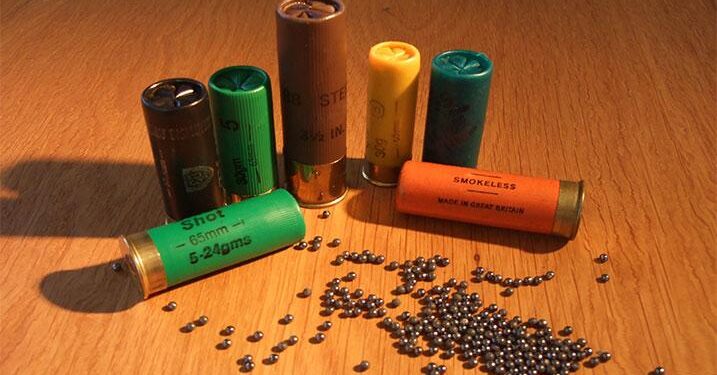Tens of thousands of tons of toxic ammunition, remnants from past conflicts, lie deteriorating at the bottom of the Baltic Sea, posing an escalating environmental threat. Germany has launched an urgent campaign to recover these hazardous materials before they cause irreversible damage to marine ecosystems and public health. As the deadly ordnance continues to corrode, experts warn that time is running out to prevent a looming ecological disaster in one of Europe’s most vital waterways.
Toxic Ammunition Poses Growing Environmental Threat in the Baltic Sea
Over the decades following World War II, thousands of tons of ammunition were dumped into the Baltic Sea, creating an invisible and escalating hazard beneath its surface. These forgotten munitions are gradually corroding, releasing toxic chemicals such as arsenic, lead, and mercury into the delicate marine ecosystem. Environmental experts warn that this contamination threatens the region’s biodiversity, fisheries, and coastal communities. The slow but steady leakage of hazardous substances poses a lingering risk not only to wildlife but also to human health through seafood consumption.
In response to these mounting dangers, Germany is spearheading efforts to locate and safely recover the deteriorating ammunition. The project aims to balance environmental safety with technological challenges by deploying advanced underwater robotics and sonar mapping techniques. Key focus areas include:
- Assessing the extent of corrosion and chemical leakage
- Prioritizing high-risk zones near shipping lanes and fisheries
- Developing protocols for safe extraction and disposal
| Recovering Region | Estimated Ammunition (tons) | Projected Recovery Date |
|---|---|---|
| Kiel Fjord | 2,500 | 2026 |
| Bornholm Basin | 3,200 | 2028 |
| Gdansk Bay | 1,800 | 2029 |
Germany Launches Urgent Recovery Efforts to Prevent Ecological Disaster
Decades-old chemical weapons and ammunition dumped in the Baltic Sea are now posing a severe threat to marine ecosystems and coastal communities. Germany has launched an ambitious plan to salvage and safely dispose of these toxic remnants before corrosion leads to widespread contamination. This initiative involves state-of-the-art underwater recovery technology and close cooperation among environmental scientists, governmental agencies, and international partners to prevent what experts fear could become an ecological catastrophe.
Key components of Germany’s recovery strategy include:
- Mapping and identifying corrosion hotspots using advanced sonar and submersible drones
- Employing specialized containment units to stabilize degraded munitions during removal
- Implementing strict safety protocols to minimize impact on marine life and human health
- Establishing long-term monitoring stations to assess recovery progress and environmental conditions
| Recovery Phase | Timeline | Expected Outcome |
|---|---|---|
| Survey & Mapping | 2024-2025 | Complete detailed site documentation |
| Extraction Trials | 2025-2026 | Test safe recovery methods |
| Mass Recovery | 2027-2030 | Systematic removal of hazardous material |
| Disposal & Monitoring | 2030-2035 | Secure disposal and ecosystem evaluation |
Experts Call for Enhanced International Cooperation and Advanced Cleanup Technologies
Scientists and environmental experts are urging nations bordering the Baltic Sea to forge stronger partnerships to tackle the urgent issue of degrading toxic ammunition dumped decades ago. These hazardous remnants pose escalating risks due to corrosion and leakage of chemical agents into marine ecosystems. Collaborative frameworks are being recommended to enhance information exchange, coordinate monitoring efforts, and secure funding for large-scale recovery missions that no single country can efficiently manage alone.
Innovative cleanup technologies are at the forefront of proposed solutions. Advanced underwater robotics, remote sensing devices, and specialized containment units are being developed to safely retrieve and neutralize munitions while minimizing disturbances to fragile habitats. The following table highlights key technologies gaining traction among Baltic Sea stakeholders:
| Technology | Description | Benefit |
|---|---|---|
| Autonomous Underwater Vehicles (AUVs) | Robots equipped with sensors to detect and map munitions | Precision targeting with minimal human risk |
| Containment Capsules | Sealed units designed to encapsulate explosive materials underwater | Prevents leakage during recovery operations |
| Chemical Neutralizers | Substances that neutralize toxic agents on-site | Reduces environmental contamination instantly |
- Cross-border funding initiatives are being proposed to pool resources efficiently.
- Unified legal frameworks aim to streamline recovery permissions.
- Public awareness campaigns seek to build support for intervention efforts.
Wrapping Up
As the decades-old remnants of toxic ammunition continue to corrode beneath the Baltic Sea, the urgency of Germany’s recovery efforts becomes ever more critical. With environmental risks mounting and the potential for widespread contamination growing, the nation faces a race against time to safely extract these hazardous materials. The success of this mission will not only safeguard the fragile marine ecosystem but also serve as a crucial step in addressing the long-term consequences of forgotten wartime legacies. How Germany navigates this complex challenge may well set a precedent for similar recovery operations worldwide.
















